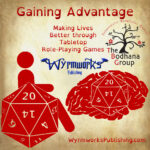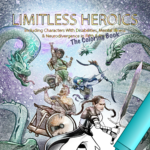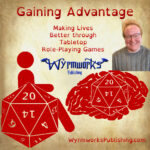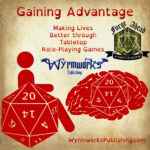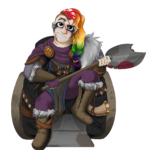It takes more than Wizards for a successful D&D Party #OpenDnD
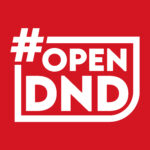
DM: As you open the door, a thick green gas billows out but does not dissipate.
Wizard: I cast Gust of Wind to dissipate the gas.
DM: Nothing happens. The feeling you normally experience when you cast a spell is gone. As you reach out to manipulate the Weave, you sense its complete absence, like a magical vacuum. As the gas swirls around you, you notice four bipedal silhouettes approaching quickly. In a moment, their long pointed ears, furry bodies, and grins brimming with confidence and menace take shape as they raise their morning stars to attack. Roll initiative….
Barbarian: I rage and draw their attention. Let’s see how well those morning stars match my ax!
Bard: I give Bardic Inspiration to the rogue
Rogue: I use the cover of the mist to hide and prepare for a snaeak attack.
Wizard: I…use my dagger, I guess.
The executives at Hasbro have taken the unconscionable initiative to attempt to eliminate their perceived competition, believing that they can play the Dungeons & Dragons game and everything it entails by themselves. It’s not going well. But why are standard corporate monetization strategies failing so catastrophically?
Hasbro sees D&D primarily for its intellectual property, as if people will pay just as much for the D&D ampersand on anything as the Nike Swoosh®. But D&D was never about the brand. Yes, its recognition holds substantial power in the industry, but its power is ultimately rooted in its core concept. From the free Basic Rules:
There’s no winning and losing in the Dungeons & Dragons game—at least, not the way those terms are usually understood. Together, the DM and the players create an exciting story of bold adventurers who confront deadly perils. Sometimes an adventurer might come to a grisly end, torn apart by ferocious monsters or done in by a nefarious villain. Even so, the other adventurers can search for powerful magic to revive their fallen comrade, or the player might choose to create a new character to carry on. The group might fail to complete an adventure successfully, but if everyone had a good time and created a memorable story, they all win.
Basic Rules, p. 3
The TTRPG industry is unlike any I’ve ever experienced in a commercial industry, because it functions under this same principle. We work together. We don’t compete with each other. Cross-promotion is the single most effective form of marketing, as we show others the cool things our “competition” makes, help each other, share tips, and buy and enjoy each other’s products. We recognize that we are all one big adventuring party.
Because Hasbro doesn’t understand its own product, its executives also don’t understand how to market it. They set themselves up as competition in a non-competitive space, thus establishing themselves as the Big Bad Evil Guy (BBEG), at which point an entire industry and their fans who spend their whole lives developing creative solutions to every insurmountable problem imaginable all roll initiative. We use our diverse skills from every direction and with unique approaches. The third party publishing community fills in the gaps of unique products for niche needs that a large company like Wizards can’t meet due to the difference in scale. It takes an entire diverse party to succeed at this game, and the action economy, the power of multiple smaller actions against one larger action, will be their undoing.
But more than that, by setting themselves up as our adversaries, they’re missing the point that this game is all about fun. It’s about community. It’s about helping each other out of jams (or oozes…). It’s about taking those lessons and applying them to real life, where we don’t just find friends, but staunch allies. And it’s that fulfillment that keeps bringing us back for more.
What a miserable life to sit alone in your castle as a decaying lich, desperately trying to protect an ampersand-shaped soul cage, while allies fight together and celebrate their victories with songs, drinks, and experience points! Even as they destroy themselves and attempt to destroy everyone around them, I can’t help but pity whatever motivates that kind of desperation. As angry as I am that they’ve chosen to deliberately remove the promises associated with the OGL from their website so they could lie about its purpose to betray us, I wish they would go down to their closest FLGS, join in a few games, and experience the true magic of D&D. Maybe the oathbreaker could be redeemed. But until then, we reluctantly raise arms, use memes of Bardic Inspiration to build each other up, and call for the healers to restore those with exhaustion, not until they declare a winner to try to call off the fight, but until the battle is truly won.
